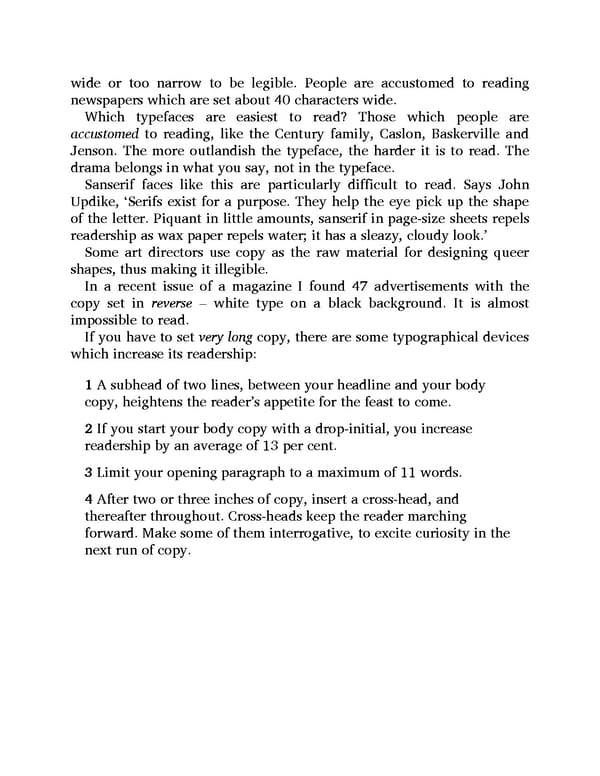wide or too narrow to be legible. People are accustomed to reading newspapers which are set about 40 characters wide. Which typefaces are easiest to read? Those which people are accustomed to reading, like the Century family, Caslon, Baskerville and Jenson. The more outlandish the typeface, the harder it is to read. The drama belongs in what you say, not in the typeface. Sanserif faces like this are particularly difficult to read. Says John Updike, ‘Serifs exist for a purpose. They help the eye pick up the shape of the letter. Piquant in little amounts, sanserif in page-size sheets repels readership as wax paper repels water; it has a sleazy, cloudy look.’ Some art directors use copy as the raw material for designing queer shapes, thus making it illegible. In a recent issue of a magazine I found 47 advertisements with the copy set in reverse – white type on a black background. It is almost impossible to read. If you have to set very long copy, there are some typographical devices which increase its readership: 1 A subhead of two lines, between your headline and your body copy, heightens the reader’s appetite for the feast to come. 2 If you start your body copy with a drop-initial, you increase readership by an average of 13 per cent. 3 Limit your opening paragraph to a maximum of 11 words. 4 After two or three inches of copy, insert a cross-head, and thereafter throughout. Cross-heads keep the reader marching forward. Make some of them interrogative, to excite curiosity in the next run of copy.
 Ogilvy on Advertising Page 140 Page 142
Ogilvy on Advertising Page 140 Page 142